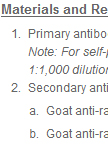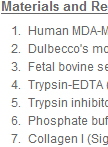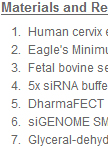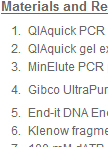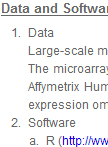往期刊物2012
卷册: 2, 期号: 4
生物化学
Immunofluorescence (Especially for Cells Growing on a Coverglass)
免疫荧光(针对生长在玻片上的细胞)
If an antibody for your protein of interest is available, immunofluorscence is a useful method to detect the localization and relative abundance of the protein by using a fluorescence microscope. Immunofluoresence can be used in combination with other, non-antibody methods of fluorescence staining, for example, the use of DAPI to label DNA. This protocol describes setting up an immunofluorescence experiment using cells grown on a coverglass.
癌症生物学
Transwell Cell Migration Assay Using Human Breast Epithelial Cancer Cell
Transwell小室检测人乳腺上皮癌细胞迁移
Transwell migration assays have been widely used for studying the motility of different types of cells including metastatic cancer cells. The assay is also useful in screens for compounds that act as chemoattractants or inhibitors of chemotaxis for cells. The assay employs a permeable layer of support, usually a tissue-culture-treated microporous membrane, which is positioned between two compartments that mimic two different sets of microenvironments for cell survival/growth. Cells on one side of the membrane, when sensing chemoattractants placed on the other side of the compartment that diffuses through the membrane, can migrate through the pores in the membrane towards the source of the chemoattractants. Cells that migrate across the membrane can be quantified by fixing and counting. Human breast epithelial adenocarcinoma MD-231 cells grow relatively fast and are metastatic. The MB-231 cell line is used here to describe the procedures of an in vitro cell migration assay using the transwell apparatus.
分子生物学
Dharmacon siRNA Transfection of HeLa Cells
Dharmacon siRNA 转染HeLa细胞
Small Interfering RNA (siRNA) is a class of double-stranded RNAs of 20-25 nucleotides that play important roles in many biological processes (Hamilton and Baulcombe, 1999). siRNAs act by “neutralizing” the mRNA of the target protein, facilitating degradation of the mRNA and hence altering the biological effect of the protein (reviewed in Hannon and Rossi, 2004). siRNAs may also change the intracellular levels of regulatory RNAs. Use of siRNAs for manipulating the expression of genes of interest in biological research is commonly referred to as RNA interference or knockdown technique (Elbashir et al., 2001). Synthetic siRNAs are an emerging tool that are now widely used in these studies. A variety of algorithms are employed by different companies for the design of siRNA products, which differ in efficacy, specificity and cost among other criteria. An example protocol of siRNA knockdown is explained here using the siGENOME SMARTpool reagents from Dharmacon.
系统生物学
Illumina Sequencing Library Construction from ChIP DNA
将ChIP方法获取的DNA用来构建Illumina测序文库
The Illumina sequencing platform is very popular among next-generation sequencing platforms. However, the DNA sequencing library construction kit provided by Illumina is considerably expensive. The protocol described here can be used to construct high-quality sequencing libraries from chromatin immunoprecipitated DNA. It uses key reagents from third-party vendors and greatly reduces the cost in library construction for Illumina sequencing.
Gene Networks Based on the Graphical Gaussian Model
高斯图模型构建基因网络
This protocol describes how to build a gene network based on the graphical Gaussian model (GGM) from large scale microarray data. GGM uses partial correlation coefficient (pcor) to infer co-expression relationship between genes. Compared to the traditional Pearson’ correlation coefficient, partial correlation is a better measurement of direct dependency between genes. However, to calculate pcor requires a large number of observations (microarray slides) greatly exceeding the number of variables (genes). This protocol uses a regularized method to circumvent this obstacle, and is capable of building a network for ~20,000 genes from ~2,000 microarray slides. For more details, see Ma et al. (2007). For help regarding the script, please contact the author.


